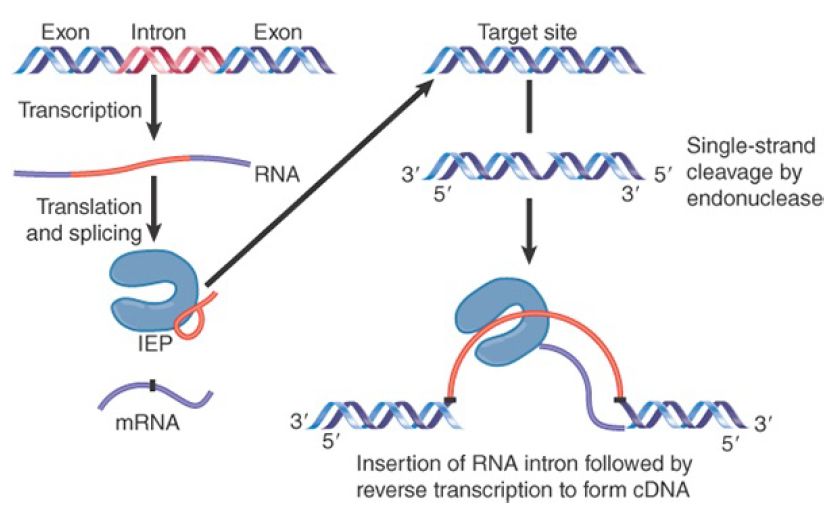

النبات

مواضيع عامة في علم النبات

الجذور - السيقان - الأوراق

النباتات الوعائية واللاوعائية

البذور (مغطاة البذور - عاريات البذور)

الطحالب

النباتات الطبية


الحيوان

مواضيع عامة في علم الحيوان

علم التشريح

التنوع الإحيائي

البايلوجيا الخلوية


الأحياء المجهرية

البكتيريا

الفطريات

الطفيليات

الفايروسات


علم الأمراض

الاورام

الامراض الوراثية

الامراض المناعية

الامراض المدارية

اضطرابات الدورة الدموية

مواضيع عامة في علم الامراض

الحشرات


التقانة الإحيائية

مواضيع عامة في التقانة الإحيائية


التقنية الحيوية المكروبية

التقنية الحيوية والميكروبات

الفعاليات الحيوية

وراثة الاحياء المجهرية

تصنيف الاحياء المجهرية

الاحياء المجهرية في الطبيعة

أيض الاجهاد

التقنية الحيوية والبيئة

التقنية الحيوية والطب

التقنية الحيوية والزراعة

التقنية الحيوية والصناعة

التقنية الحيوية والطاقة

البحار والطحالب الصغيرة

عزل البروتين

هندسة الجينات


التقنية الحياتية النانوية

مفاهيم التقنية الحيوية النانوية

التراكيب النانوية والمجاهر المستخدمة في رؤيتها

تصنيع وتخليق المواد النانوية

تطبيقات التقنية النانوية والحيوية النانوية

الرقائق والمتحسسات الحيوية

المصفوفات المجهرية وحاسوب الدنا

اللقاحات

البيئة والتلوث


علم الأجنة

اعضاء التكاثر وتشكل الاعراس

الاخصاب

التشطر

العصيبة وتشكل الجسيدات

تشكل اللواحق الجنينية

تكون المعيدة وظهور الطبقات الجنينية

مقدمة لعلم الاجنة


الأحياء الجزيئي

مواضيع عامة في الاحياء الجزيئي


علم وظائف الأعضاء


الغدد

مواضيع عامة في الغدد

الغدد الصم و هرموناتها

الجسم تحت السريري

الغدة النخامية

الغدة الكظرية

الغدة التناسلية

الغدة الدرقية والجار الدرقية

الغدة البنكرياسية

الغدة الصنوبرية

مواضيع عامة في علم وظائف الاعضاء

الخلية الحيوانية

الجهاز العصبي

أعضاء الحس

الجهاز العضلي

السوائل الجسمية

الجهاز الدوري والليمف

الجهاز التنفسي

الجهاز الهضمي

الجهاز البولي


المضادات الميكروبية

مواضيع عامة في المضادات الميكروبية

مضادات البكتيريا

مضادات الفطريات

مضادات الطفيليات

مضادات الفايروسات

علم الخلية

الوراثة

الأحياء العامة

المناعة

التحليلات المرضية

الكيمياء الحيوية

مواضيع متنوعة أخرى

الانزيمات
Group II Introns May Encode Multifunction Proteins
المؤلف:
JOCELYN E. KREBS, ELLIOTT S. GOLDSTEIN and STEPHEN T. KILPATRICK
المصدر:
LEWIN’S GENES XII
الجزء والصفحة:
21-5-2021
2263
Group II Introns May Encode Multifunction Proteins
KEY CONCEPTS
- Group II introns can autosplice in vitro but are usually assisted by protein activities encoded in the intron.
- A single reading frame specifies a protein with reverse transcriptase activity, maturase activity, a DNA-binding motif, and a DNA endonuclease.
- The endonuclease cleaves target DNA to allow insertion of the intron at a new site.
- The reverse transcriptase generates a DNA copy of the inserted RNA intron sequence.
The mechanism for autocatalytic splicing of group II introns is described in the RNA Splicing and Processing chapter. The best characterized mobile group II introns encode a single protein in a region of the intron beyond its catalytic core. This protein is known as the intron-encoded protein (IEP). The typical IEP contains an Nterminal reverse transcriptase activity, a central domain associated with an ancillary activity that assists folding of the intron into its active structure (called the maturase; see the next section, Some Autosplicing Introns Require Maturases), a DNA-binding domain, and a C-terminal endonuclease domain.
In the first step, the maturase activity of the IEP assists the splicing reaction by stabilizing the RNA. The lariat intron produced during splicing remains associated with the IEP. The endonuclease initiates the transposition reaction and plays the same role in homing as its counterpart in a group I intron. The reverse transcriptase generates a DNA copy of the intron that is inserted at the homing site. The endonuclease also cleaves target sites that resemble, but are not identical to, the homing site, leading to insertion of the intron at new locations.
FIGURE 1. illustrates the transposition reaction for a typical group II intron. First, the endonuclease makes a single-strand break in the antisense strand. Cleavage of the sense strand is achieved by a reverse splicing reaction, with the RNA intron inserting itself into the DNA between the DNA exons. This newly inserted RNA intron can now act as a template for the reverse transcriptase. Almost all group II introns have a reverse transcriptase activity that is specific for the intron. The reverse transcriptase generates a DNA copy of the intron, with the end result being the insertion of the intron into the target site as a duplex DNA.

FIGURE 21.10 Reverse transcriptase/endonuclease encoded by an intron allows a copy of the RNA to be inserted into a target site.
IEP represents the intron-encoded protein.
 الاكثر قراءة في مواضيع عامة في الاحياء الجزيئي
الاكثر قراءة في مواضيع عامة في الاحياء الجزيئي
 اخر الاخبار
اخر الاخبار
اخبار العتبة العباسية المقدسة

الآخبار الصحية















 قسم الشؤون الفكرية يصدر كتاباً يوثق تاريخ السدانة في العتبة العباسية المقدسة
قسم الشؤون الفكرية يصدر كتاباً يوثق تاريخ السدانة في العتبة العباسية المقدسة "المهمة".. إصدار قصصي يوثّق القصص الفائزة في مسابقة فتوى الدفاع المقدسة للقصة القصيرة
"المهمة".. إصدار قصصي يوثّق القصص الفائزة في مسابقة فتوى الدفاع المقدسة للقصة القصيرة (نوافذ).. إصدار أدبي يوثق القصص الفائزة في مسابقة الإمام العسكري (عليه السلام)
(نوافذ).. إصدار أدبي يوثق القصص الفائزة في مسابقة الإمام العسكري (عليه السلام)


















